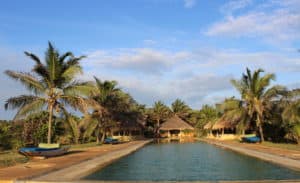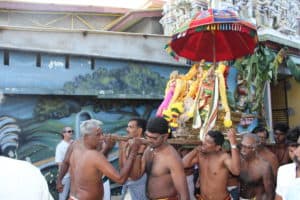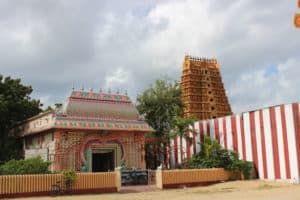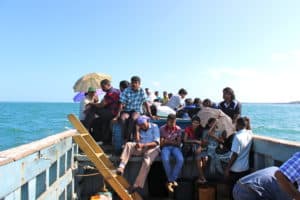As travellers, we’re far from being newcomers to either Sri Lanka or Experience Travel. We were a nine-strong group of sixty-something old-handers, including ETG’s first ever and tsunami-stranded clients. So we weren’t shy to accept their invitation to explore some of the less developed tourist regions that lie in northern Sri Lanka.
These were the resort areas that flank the Cultural Triangle on both East and West and, more notably, Jaffna city, islands and peninsular that form the northernmost part of Sri Lanka, and the Wanni war zone south of the famous Elephant Pass. They form the country’s Tamil – and therefore Hindu – heartland with all its differences in culture and history to the predominantly Buddhist south.
Bar Reef Resort is one of a small cluster of resort hotels set on Alankuda Beach on the Kalpitya peninsular, some two hours drive up the west coast from Colombo’s Bandaranaike Airport. The location is a little off the beaten track, so you might need to allow three hours. This is Sri Lanka after all!
Delightfully and peacefully located on a sandy beach that offers safer swimming than most of Sri Lanka’s popular southern beaches, Bar Reef has eight cabanas and two villas, all spacious and pleasingly designed with palmyrah roofs, open walls, large gardens, and exterior – yet private – shower and toilet areas. Much is owed to nature with taps made from large sea-shells delivering water whose temperature reflects that of the day’s weather, usually pleasantly warm.
Most exciting feature of Bar Reef is its 30 metre salt-water infinity pool. A stunning vista in itself , the view from its water is uninterrupted to the sea, as the seafront beach bar and sunbathing areas are carefully off set to the side .
This was a great place to relax and shake-off jet lag. Then the trail-blazing began!
Complete with Murali our guide, Ajith the driver, and Kumar riding shotgun, our comfortable twelve-seater coach set out on excellent roads to Jaffna. En route we enjoyed a four hour jeep safari in Wilpattu National Park. This is Sri Lanka’s largest and most wild nature park, a massive 131,693 hectares only a small portion of which is open to visitors. Nihal da Silva’s fascinating wartime novel ‘ The Road from Elephant Pass’ is largely set here.
Driving through its extensive jungle and past its ‘willus’ – large natural lakes – expect to see a wide variety of beautiful bird, animal and reptile species, but not in large numbers. We were unlucky not to spot its famous leopards as other visitors there at the same time did. Peaceful and atmospheric – especially when we experienced a tropical downpour! – it’s a far cry from the tourist overrun parks such as Yala and Minneriya.
Once well clear of Anuradhapura, the main feature of the road was its lack of traffic and population, as we had entered the region deeply affected by Sri Lanka’s thirty year long war that only ended in 2009. However it has been rebuilt since then and runs alongside an also renovated railway track that will shortly reconnect Jaffna with the rest of the country.
Extravagant war memorials celebrate the government’s victory in an excessively, we thought, triumphal way. A chilling reminder of the horrors of war were hundreds of signs warning of unexploded landmines along both sides of the road for many kilometres.
Elephant Pass isn’t mountainous and has nothing to do with Hannibal! It’s the strategically vital causeway that connects the Jaffna Peninsular with Sri Lanka’s mainland. Once crossed we felt as if in another country.
Despite updated guidebooks, we had very little pre-conception of what Jaffna City would be like, yet driving into it in the mid afternoon, was perhaps a bit of an anti-climax. With only a few landmarks or historical buildings evident, but considerable dereliction and no sign yet of large scale re-construction, it was quickly clear that our traditional sightseeing instincts weren’t going to be instantly fulfilled, and that our appreciation of this special city would have to be achieved in other ways.
Don’t expect the Hilton, Galle Face or Cinnamon Grand hotels of Colombo. Such opulence is some way from becoming reality in Jaffna City. Our well located city centre Subhas Hotel – one of the best on offer – overlooked the back of the city’s main hospital. It had recently been modernised, offering well-furnished and comfortable rooms, and staff worked hard to please. However it lacked some charm and some facilities – including a bar!
The extensive but bland 17th century Dutch Fort is one of its key and historically most significant attractions, importantly cleared of debris and renovated by Sri Lankan and Dutch money in the last few years. The most colourful thing we saw there was a Tamil boy-band prancing about in bright clothes shooting a video. There was an uplifting message here – vibrant modernity against an ancient backdrop promising new life, vigour and generational continuity.
Our enjoyment of Jaffna City started in the vibrancy of its commercial sector, many say more like an Indian than a Sri Lankan city, with shops and stalls selling the essentials of life and business, and its roadside restaurants serving the staple fare of curry, rice and ‘short eats’. Wartime curfews have conditioned the occupants habits and everything still closes by 9 pm, so there is no ‘night economy’ in Jaffna – yet!
The event in the city that stands out in all our minds was a pooja ritual at the magnificent Nallur Hindu temple. With the men’s torsos bared and the women’s shoulders well covered, we were accepted to mingle (but not take photos) as the worshippers responded to the Brahmin priests’ performance of ceremonial allegiance to their many gilded deities. Following the priests around the temple’s many brightly coloured and ornate shrines, fire, drums, the wailing of a woodwind instrument, bells, incense – all resulted in a sensory cacophony that generated a tangible spirituality. Don’t miss this!
Moving out of the small city, which is done quickly, and on to the suburban spaces of the peninsular was an altogether different experience. We passed many abandoned villas and buildings that had seen affluence in better times, and also Dutch churches that had clearly seen splendour in the past. We visited one such derelict Portuguese villa that evoked a curious spirit of continued human existence despite its emptiness. But the atmosphere amongst the tidy streets and low dwellings was calm and settled.
Don’t forget that, after its early years, the war was not waged here in Jaffna. It moved south. Dereliction is mainly due to mass emigration and economic devastation, not that of shells and bullets.
Northernmost Point Pedro’s magnificent shore is amply populated by fishermen and their colourful boats and its fascination is greatly enhanced by the roadside fish-processing activity. The hundreds of dissected fish, lying on the ground drying ready for salting, provide accidental but alluring wallpaper-type patterns.
The absence of empathy with conventional demands of Western tourists was amply illustrated when we took dinner at a military owned and run resort hotel (one of the very few resort hotels in the region). We do love our wine and asked what they could offer. For white they deferentially produced chardonnay – and Cinzano. However the deference fell apart when we got to the dining room – the entire catering staff was assembled and totally focused on watching Sri Lanka in a crucial one-day cricket international on TV. The curry and rice dishes they served were nonetheless very good…
Outstandingly memorable in our whole eight day tour was our visit to Delft. Again, our expectation of this most westerly island was unclear. ‘It’s different’ we were told, but in what way was unclear. First, the drive from Jaffna City was spectacular. Crossing two other islands to reach the ferry to Delft meant a slow drive over badly surfaced causeways across Jaffna’s vast and exquisite lagoons with their calm water, abundant birdlife, and myriad prawn farms.
The ferry was an experience in itself. The normal passenger vessel was out of service and replaced by a wooden cargo boat with a deep hold, no real seating, and not a lifebelt in sight. We perched on gunwales, dangled our legs from a four foot high bench ‘seat’ and hoped for the best. The one-hour ride turned out to be smooth (less so coming back), yet we were deeply conscious of the disparity in safety and comfort between our feather-bedded developed-country lives and those of our Sri Lankan fellow travellers for whom this is the norm.
Once safely disembarked, Delft’s sole jeep took us over rough roads to the island’s main attractions. One of these was all-pervasive – the coral of which the island is formed and which manifested itself in the cleverly interlocking dry stone walls that the coral’s unique surface enables. Sparsely populated though it is, Delft – as well as having a particular feel of its own –threw up a couple of tourist gems.
A community of fisher folk was encamped for the season in rough palm roofed shacks by the shore. Here they caught in nets the abundant sparkling small fish and dried them, an almost primeval existence with no sign of 21st century embellishment. Local toddy production in a charming cottage garden, similarly ageless, gave us the chance to sample this potent, milky Sri Lankan staple drink, made from the sap of coconut palms. At just a few rupees a bottle, inebriation is well within reach of the man in the Delft street!
Heading south east and towards our final destination near Trincomalee took us back through the Wanni area which was the scene of most military activity in the civil war. Wary of endorsing war tourism, we had to overcome some qualms about visiting government promoted sites whose operation was clearly driven by its propaganda and self-justification.
The main thing we saw gave us a small insight into just one aspect of the way the war was fought – the use of submarines. Miniature craft were built by the Tamil forces from recycled materials and used in suicide missions. Twenty or more of these were on display at an open museum, along with other crudely built vessels and weaponry. We saw a large and very deep swimming pool that was apparently used by Tamil freedom fighters both for the recreation of their officers and to test the miniature craft. At another site we witnessed a very much larger submarine in early stages of its interrupted construction, using ex-railway rails as a framework.
Light relief was the object of the last three days of our trip and we were happy to check in to Nilaveli Beach Hotel just north of Trincomalee for some conventional tourist ‘R n R’. Impacted by the war because of its location, but not too badly affected by the 2004 tsunami, this resort hotel has recovered well and offers comfortable four-star accommodation and facilities on its own stretch of the very long Trincomalee beach. Service is comprehensive and friendly. Menus are wide-ranging and the food is good. The atmosphere is informal and relaxed. (Being charged for wifi by the hour was a relic of the past, out of step with all our other hotels, and the management took good note of our comments, we hope!)
Visiting Trincomalee town, famous for its very deep natural port, we struck lucky by happening upon an annual ceremony at the magnificent Hindu temple. Reminiscent of our earlier experience in Jaffna, this pooja went much further as it was the preamble to the procession of some of the gods around the town. The theatrical activity was spell-binding – casting of flowers, pouring of oil, flashing of flames, drums, bells, music. It culminated in the springing up of a lavishly illustrated screen – to the gasps of the worshippers – to reveal an ornate shrine from which the deities were lifted to shoulder height by strong Brahmins and clumsily conveyed to the temple door and beyond with more flames, flowers and drums.
That evening, an exquisite sunset over Trincomalee bay underlined the aesthetic experience of our day, and provided a memorable full stop to our northern Sri Lanka adventure, whose boundary stretching made this a very out-of-the-ordinary trip, one that we heartily recommend to others of our tourist-type.
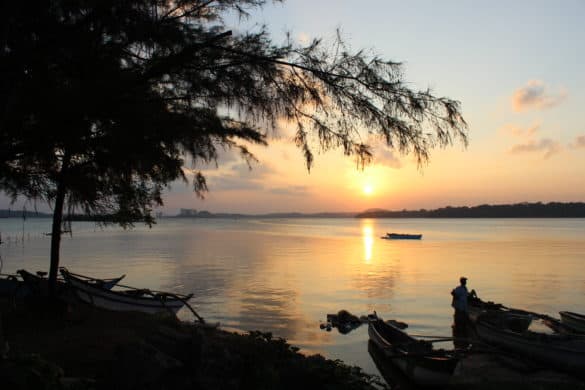
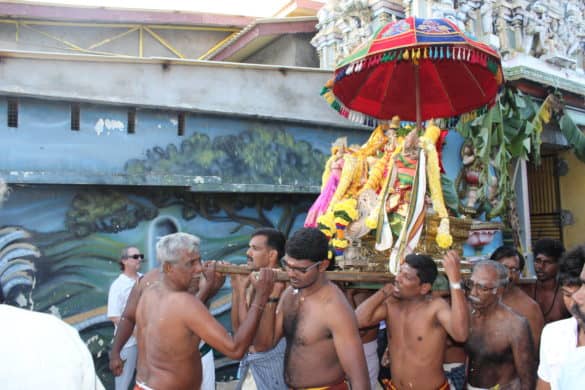
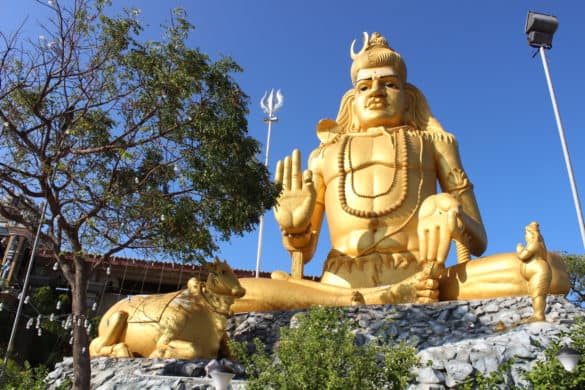
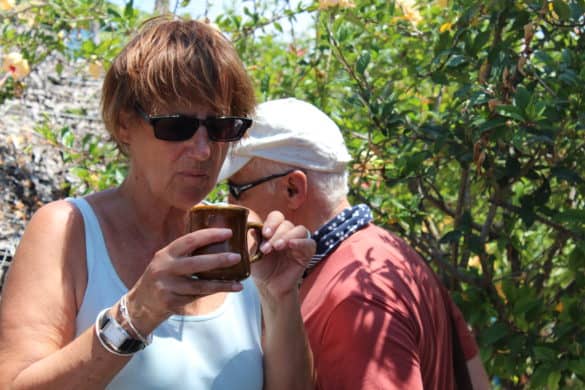
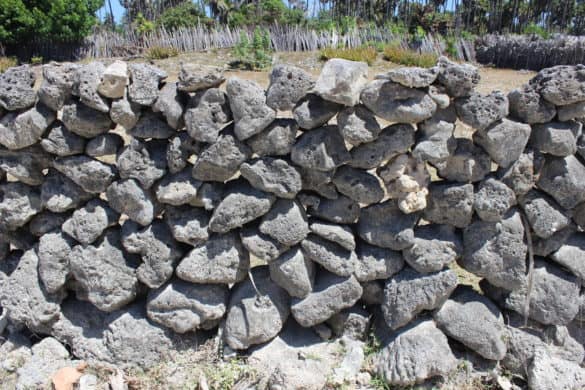
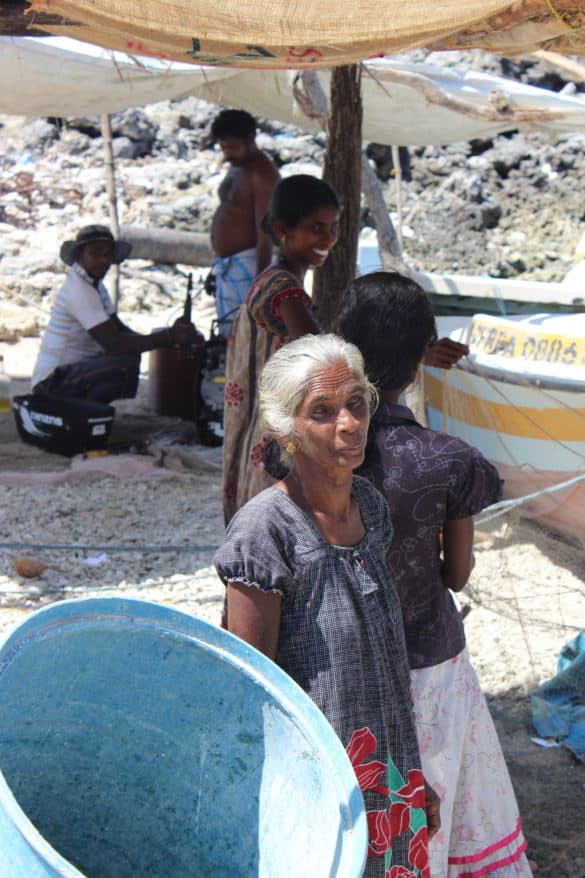
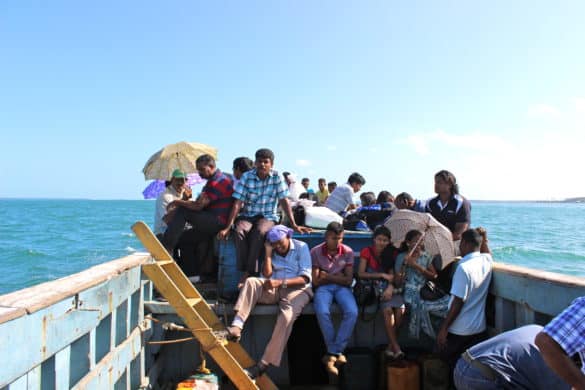
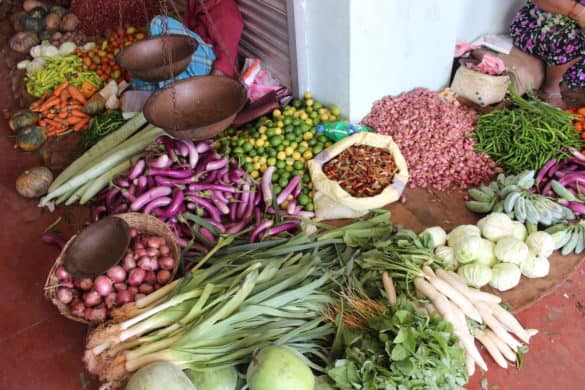
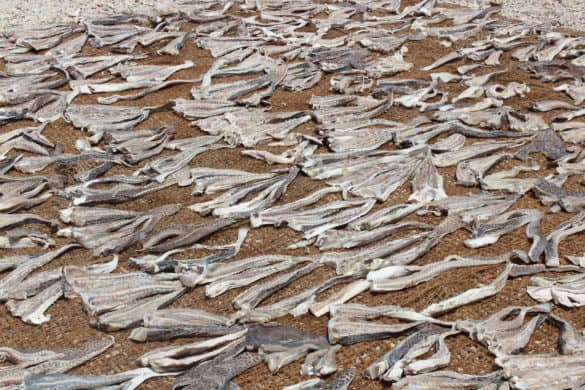
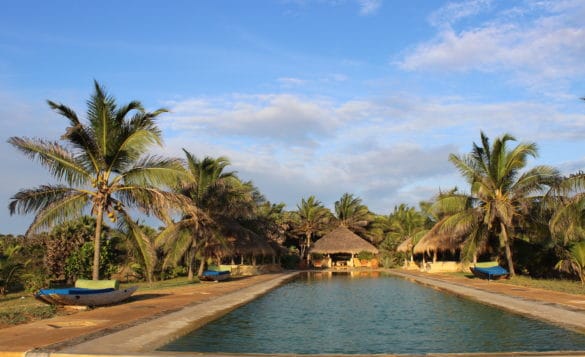
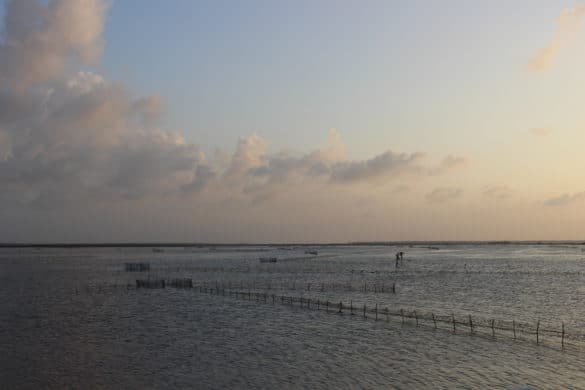
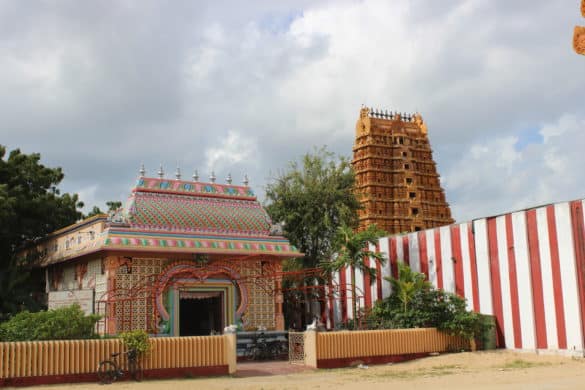
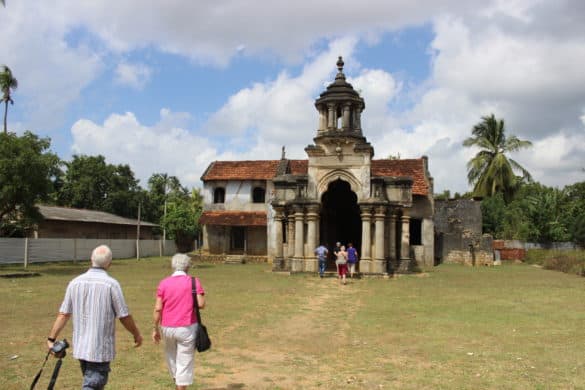
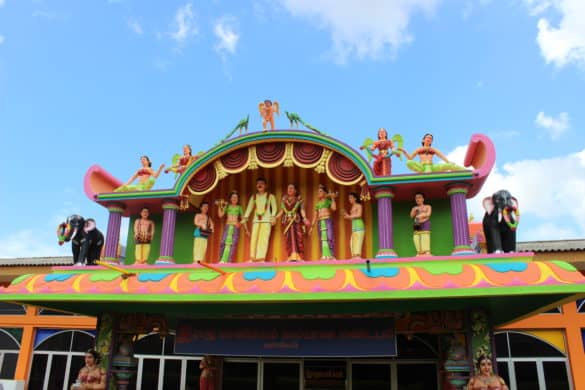
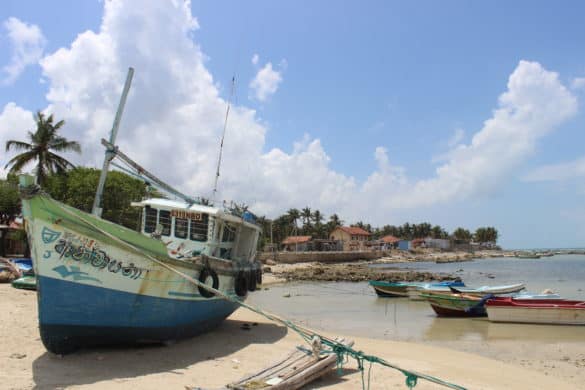
You can read more about Experience Travel Group’s experience in North Sri Lanka with Andrew Eames if you like.


